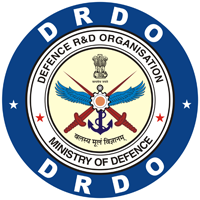Study and Modelling of Effect of Tilt Angle on Thermal Signatures of Different Emissivity Surfaces
DOI:
https://doi.org/10.14429/dsj.20220Keywords:
Angular variation, Low emissivity, Viewing angle, TAITHERM IR, Sky radianceAbstract
The study and modelling of angular variation of thermal signatures are paramount for designing efficient thermal camouflage pattern painting schemes for military vehicles. To model and experimentally measure the effect of tilt angle on thermal signatures of different emissivity surfaces, a test panel was prepared with different emissivity paints (ε = 0.4 to 0.9). Thermal signatures (Apparent temperatures) of the test panel were measured in Middle Wave Infrared (MWIR, 3-5µm) and Long Wave Infrared (LWIR, 8-12µm) for variable tilt angles of surface normal to test panel concerning horizon ranging from -60° to 60° under different ambient conditions. The thermal signatures of the test panel were also simulated using thermal signature prediction software- TAITHERM IR. The simulated thermal signatures were compared with measured thermal signatures, and they agreed considerably. However, some deviations were observed, which may be attributed to using approximate assumed values of the Bi-directional Reflectivity Distribution Function (BRDF) of paints as input parameters in software. The paint of lower Emissivity (< 0.6) showed a larger variation in thermal signatures with tilt angle than the higher emissivity paint. Further, the variation of thermal signatures with tilt angle is more pronounced in LWIR (8-10°C reduction in apparent temperature) than in MWIR. This study may provide valuable inputs for developing and assessment new IR stealth techniques.
Downloads
Published
How to Cite
Issue
Section
License
Copyright (c) 2025 Defence Scientific Information & Documentation Centre (DESIDOC)  Where otherwise noted, the Articles on this site are licensed under Creative Commons License: CC Attribution-Noncommercial-No Derivative Works 2.5 India
Where otherwise noted, the Articles on this site are licensed under Creative Commons License: CC Attribution-Noncommercial-No Derivative Works 2.5 India

